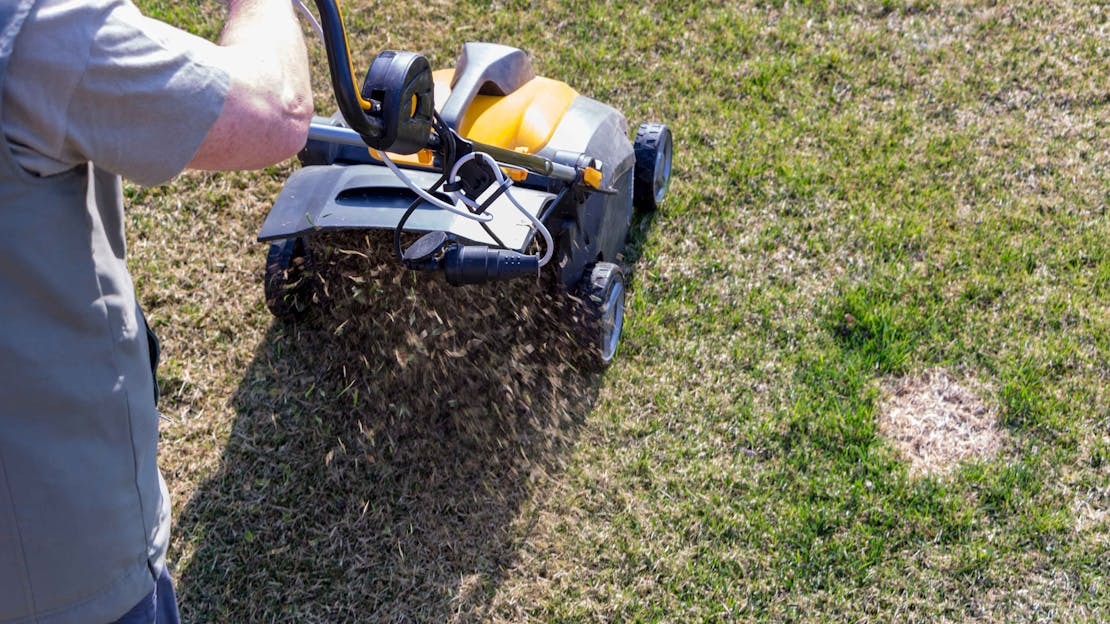
Restoring an Old Lawn
An old lawn suffers from compaction so any renovation should include an intense period of aeration, hollow tining and scarification to give it its best chance.
The chances are you are reading this because your lawn is suffering from some or all of the following conditions associated with an older lawn:
- premature drying in summer
- slow or poor grass growth
- weeds and moss invasion
- compaction
- pooling of water after rain
- not responding well to fertiliser
- heavy thatch layer
Presumably you’ve decided to try and renovate the lawn rather than replace it so here is the program to follow to give your lawn the best chance. The main treatments that will help resolve some of the issues your lawn has are:
- Heavy scarification
- Regular aeration
- Hollow Tine Aeration
- Using a Wetting Agent
Whilst endeavouring to achieve these keep up with a seasonal programme of feeding, weeding and moss control. Because of the stress the lawn is under due to its age plus the invasive treatments you will be undertaking the lawn will need every assistance to remain healthy. This will involve feeding every season if possible, together with good mowing practices to reduce stress on the grass, improve density and help the grass develop deeper roots.
Heavy Scarification
This means removing as much thatch as possible so that the lawn soil is exposed. This will involve multiple runs across the lawn from slightly different directions to cut away the thatch. This is best done in autumn to avoid weeds but if needs must then do this in spring and follow up with weed control 3 months after completion. Use a scarifier with blades only.
If your lawn is very large then split into manageable sections doing one section each spring and autumn until complete. If the thatch/lawn starts coming up in big chunks, then the lawn has rooted into the thatch and this is now a major problem and a strong indicator to replace rather than renovate the lawn.
You can follow the complete program in this section which will conclude with over seeding and feeding. Start reading from this page Scarifying and Raking or if you have moss see Moss Removal and the following page.
Regular Aeration
To reduce compaction in heavily used areas spike aerate as often as possible (weekly if you like). Something like the rolling aerator is ideal for small to medium sized areas when the ground is reasonably soft. In addition, try and use different routes across the lawn to spread use e.g. to the garden shed.
For the remainder of the lawn aerate as often as possible with spikes. This is easily done every month if the lawn is small but once you get over a 100m2 it starts to get to be a big job requiring a powered aerator. Doing this once a year has little value so if that’s all that can be managed use a hollow tine aerator if suitable for your lawn.
Hollow Tine Aeration
Highly beneficial for compacted lawns as this relieves pressure in the soil. If you can do this annually as well as regular spiking you have a good chance of improving your lawn. Unfortunately hollow tine aeration can be a little problematic on very sandy soils, sticky clay soil or very wet soil as the times can block rendering the process pretty useless.
October is the idea time though this can also be done after scarifying and before seeding in September if the ground is moist and soft enough.
Wetting Agents
Compaction in old lawns reduces the air and water holding capacity of the soil. This is addressed in part by spiking and hollow tining but in the early years of the restoration process a wetting agent will dramatically improve how the lawn stores rain water thus reducing the occurrence of premature drying.